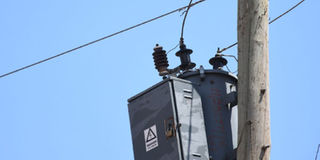Prime
Taxpayers lose Shs104.4b to UETCL’s non-evacuated power

Power transmission lines in Kampala. While emphasis was put on power generation, transmission and distribution have been neglected to the extent that there are many power dams in the country that have no transmission lines to evacuate electricity. PHOTO | EDGAR R. BATTE
Government paid Shs104.4b to power generators for electricity that was not evacuated during the financial year ended June 2020.
A 2020 audit report of Uganda Electricity Transmission Company Limited(UETCL), a government owned company in charge of buying electricity from power generators has revealed that 9 per cent of the electricity purchased was for deemed energy.
Deemed energy purchases is electricity paid for yet not evacuated which means it was not generated or consumed.
“The review of cost of sales showed that UETCL incurred Shs1.1trillion of which Shs104.4 billion (9 per cent) is deemed energy costs,” the report read in part.
The amount paid for the deemed energy is Shs10b more than what government provided Saccos and microfinance institutions to support micro and small scale enterprises through the aftermath of the Covid-19 lockdown period.
According to the report, the largest chunk of the deemed energy costs went to Achwa River Energy Project (ARPE), the developer of Acwa hydro power project commissioned in 2019.
“The 41 megawatt MW Achwa II Hydro Power Plant was commissioned in October, 2019.
At the time, this plant did not have power evacuation lines, and hence the developer billed Shs64.83b for deemed energy from October 2019 to June 2020 which is fully subsidised by government,” the auditors noted.
There are 14 other generators that billed UETCL for deemed energy including Eco power Uganda limited, Access solar Uganda limited, Tonder energy- bugoye, Muvumbe hydro and Elgon Siti (pvt) limited among others.
Genesis
Uganda has grown its power generators from three in 2001 to 41 in 2020 with the goal of increasing the country’s generation capacity to avoid a repeat of the load shedding that happened around 2005 due to limited power.
However, while emphasis was put on power generation, transmission and distribution have been neglected to the extent that there are many power dams that have no transmission lines to evacuate electricity.
It is a sticky situation because the sector through UETCL is married to power producers through contracts obliging it to purchase available units of electricity whether or not they are consumed.
So deep-rooted is the cancer that the effect spills over to Uganda Electricity Distribution Company limited,(UEDCL), another government owned entity in charge of power supply, but part times as an evacuator in the absence of transmission lines.
The company which constructs temporary evacuation lines reported energy losses worth Shs14b on account of evacuation losses of 14 per cent since 2018.
UETCL management explained that the challenge is mainly attributed to low demand and limited distribution and transmission networks before power purchase agreements are signed. Government through Ministry of Finance and UETCL actively participate in drafting of PPAs with the electricity regulator’s approval.
“Management further clarified that UETCL has stopped the inclusion of deemed energy clauses in the new power purchase agreements,” the report noted.
Achwa hydro power project
On realising the absence of a transmission line from Acwa dam, government, through UEDCL, constructed a Shs30b temporary distribution line to evacuate 12MW of the total 41MW generated from the dam.
However, the line only evacuated power for four months before halting the process due to technical glitches occasioned by differences in construction design of the dam and line.
As a result, people of Gulu still suffer power outages despite neighbouring a hydro power dam whose developers are earning billions for redundancy.




